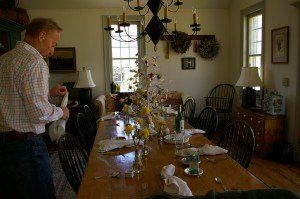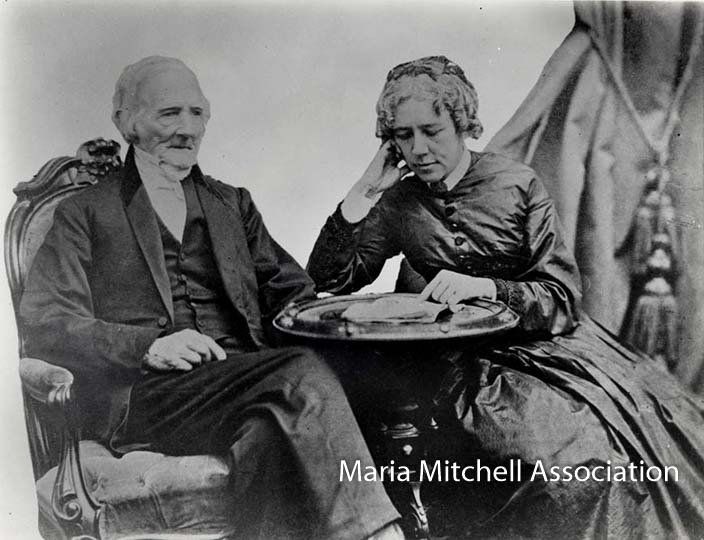The Tallest of Us All
My Dad, decorating the table for Easter 2014. About a week later, he was hospitalized for a massive infection, a side effect of his chemotherapy, that almost killed him.
A short time ago, my nephew finally talked about my Father who died on February 13th this year. He had not mentioned him before that. As my Mother was putting him to bed he said, “Grandpa was the tallest of all of us in the family, right Nana? He had to bend to get under some doors.” He is right. My Dad was the tallest – in many ways. He always stooped or bent his head a bit to the side when he went through a doorway. It was something he did automatically. And living, in a 1750s tavern, reinforced that habit. But he was the tallest too as the heart of our family. He and my Mother together. I love that in his mind’s eye, my nephew sees him as a giant because he was. A giant in our life; a giant in the lives of everyone he touched. You can’t say that about everyone. He was a protector; a quest stable force that so many relied upon, that we relied upon. But he taught us well; I think he gave us a very good map to follow. His guidance is there.
The Mitchell family had the same in their father and mother as well. When Lydia Mitchell died in 1861, Maria and her father, William, were just about all that was left on island of the immediate Mitchell family. They could not take it; they could not remain here without her. It was too painful. And so, in a way, they fled their island home to a small city where they were close to family and friends, but where every turn did not remind them of what they had lost. When she lost her father, she was even more adrift. Maria cared for both of her parents but her father was also her mentor and in many respects a “co-worker.” She felt even more abandoned when she lost him.
Everyone reacts differently. I think that fleeing is just burying your head in a way, but I certainly understand it. I live in the house that my Father designed and that my parents built and it is painful. But I am removed from the Town in which my parents live and our family house and the reminders at every turn – though there are many here on island as well since my time here goes back to the age of one and a half – my Dad to 1964 and my Mom to the 1950s.
JNLF
Recent Posts






